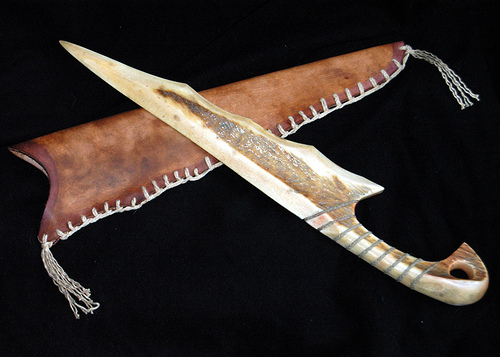The War of Tarim
What do you need when you are creating an exciting tale of the Hyborian Age for your characters to explore? You need a plot. Exciting locales and situations. Interesting foes and NPCs.
Well, if you think about it, you can get all of that in the various Conan tales. All you have to do, as GM, is pick a story you like and slap some game stats on things as needed. You can pick your favorite Conan short story or novel, your favorite pastiche, even a story from the various Conan comics.
That last is especially suited for gaming in that, with the story, characters, and situations, you also get visualizations that can inspire your game.
When I read through the War of Tarim story arc in Marvel's Chronicles of Conan, I never stopped thinking of how that story would make for a grand, epic Hyborian Age adventure for my players.
The War of Tarim story arc starts The Chronicles of Conan vol. 3 and ends in vol. 4. It's set around the Vilayet sea. A Hyrkanian city-state, called Makkalet on the eastern shores of the Vilayet has stolen the living god (the holy object of the Tarim religion) from Aghapur. Yildz is still king of Turan, and he sends a massed army to besiege Makkalet, led by the crown prince himself, Yezdigerd. The players, of course, will become embroiled in this cluster-joined, topsy-turvey, twisty-misty story.
This tale has it all--scheming sorcerers and priests, insight into the religion of Turan, opportunities to use one of the mass battle combat systems from the game, maybe even a chance to use the sea-battle system from the game, backstabbing NPCs, and even an opportunity to bring Red Sonja (you may want to replace her with another PC or NPC) into your campaign.
Use each tale in this story arc as its own separate adventure. Put them together, and you've got your campaign.
Thusly:
Episode I: Hawks From The Sea, in which the players become embroiled in this mess. The assault on Makkalet as begun!
Episode II: The Black Hound of Vengeance, in which the players make an enemy of the crown prince of Turan!
Episode III: Monster of the Monoliths, in which the players switch sides in the battle! But, only to be used by the other side!
Episode IV: The Shadow of the Vulture, where the players are hunted by the most feared bounty hunter of all the surrounding territories of the Vilayet.
Episode V: The Song of Red Sonja, in which the players make an ally of the red haird sword master....or, do they?
Episode VI: The Mirrors of Kharam-Akkad, in which the players learn that part of this tale stretches back to the time of Kull!
Episode VII: The Hour of the Griffin, in which the players learn about their part in destiny.
What do you need when you are creating an exciting tale of the Hyborian Age for your characters to explore? You need a plot. Exciting locales and situations. Interesting foes and NPCs.
Well, if you think about it, you can get all of that in the various Conan tales. All you have to do, as GM, is pick a story you like and slap some game stats on things as needed. You can pick your favorite Conan short story or novel, your favorite pastiche, even a story from the various Conan comics.
That last is especially suited for gaming in that, with the story, characters, and situations, you also get visualizations that can inspire your game.
When I read through the War of Tarim story arc in Marvel's Chronicles of Conan, I never stopped thinking of how that story would make for a grand, epic Hyborian Age adventure for my players.
The War of Tarim story arc starts The Chronicles of Conan vol. 3 and ends in vol. 4. It's set around the Vilayet sea. A Hyrkanian city-state, called Makkalet on the eastern shores of the Vilayet has stolen the living god (the holy object of the Tarim religion) from Aghapur. Yildz is still king of Turan, and he sends a massed army to besiege Makkalet, led by the crown prince himself, Yezdigerd. The players, of course, will become embroiled in this cluster-joined, topsy-turvey, twisty-misty story.
This tale has it all--scheming sorcerers and priests, insight into the religion of Turan, opportunities to use one of the mass battle combat systems from the game, maybe even a chance to use the sea-battle system from the game, backstabbing NPCs, and even an opportunity to bring Red Sonja (you may want to replace her with another PC or NPC) into your campaign.
Use each tale in this story arc as its own separate adventure. Put them together, and you've got your campaign.
Thusly:
Episode I: Hawks From The Sea, in which the players become embroiled in this mess. The assault on Makkalet as begun!
Episode II: The Black Hound of Vengeance, in which the players make an enemy of the crown prince of Turan!
Episode III: Monster of the Monoliths, in which the players switch sides in the battle! But, only to be used by the other side!
Episode IV: The Shadow of the Vulture, where the players are hunted by the most feared bounty hunter of all the surrounding territories of the Vilayet.
Episode V: The Song of Red Sonja, in which the players make an ally of the red haird sword master....or, do they?
Episode VI: The Mirrors of Kharam-Akkad, in which the players learn that part of this tale stretches back to the time of Kull!
Episode VII: The Hour of the Griffin, in which the players learn about their part in destiny.
Last edited:













